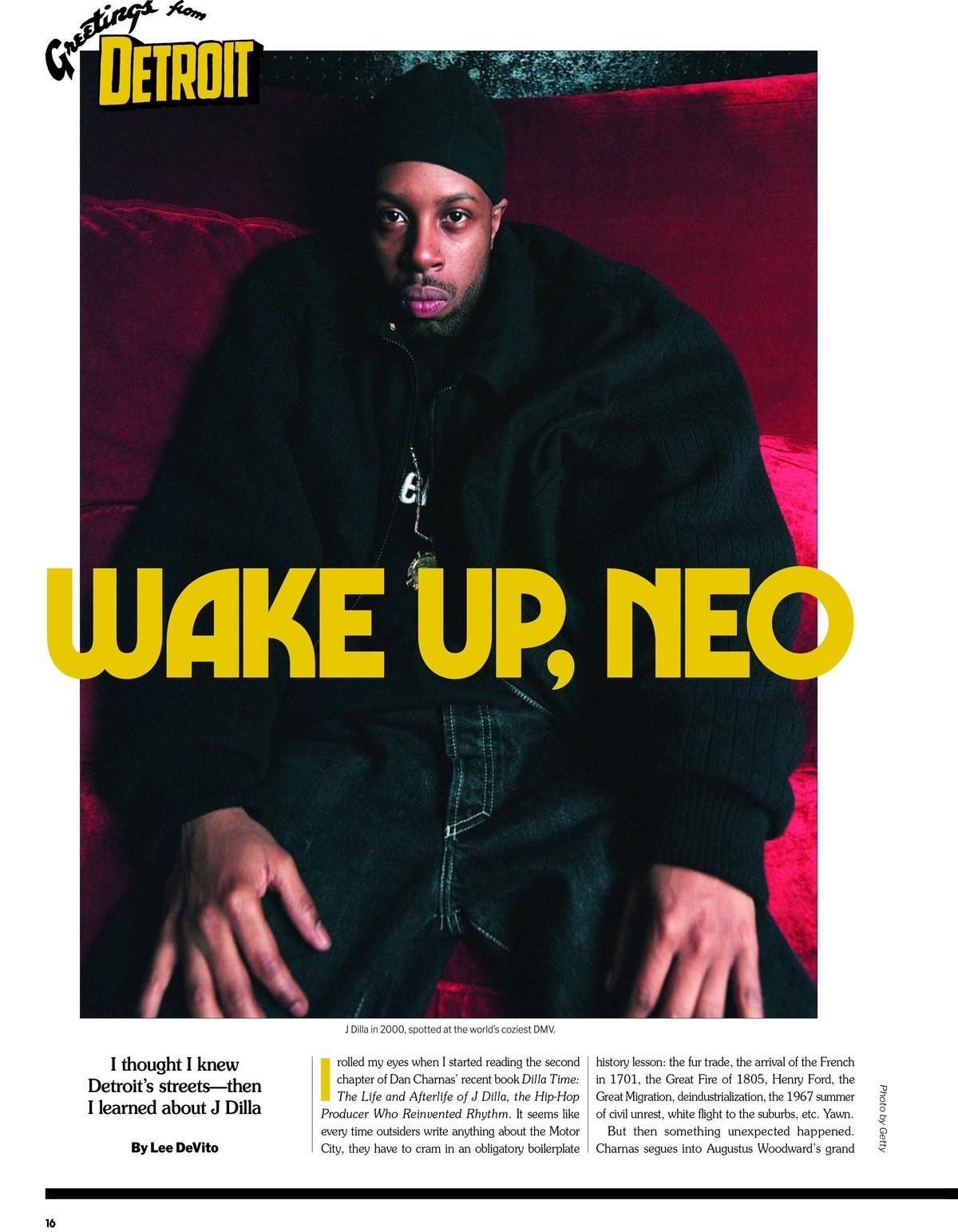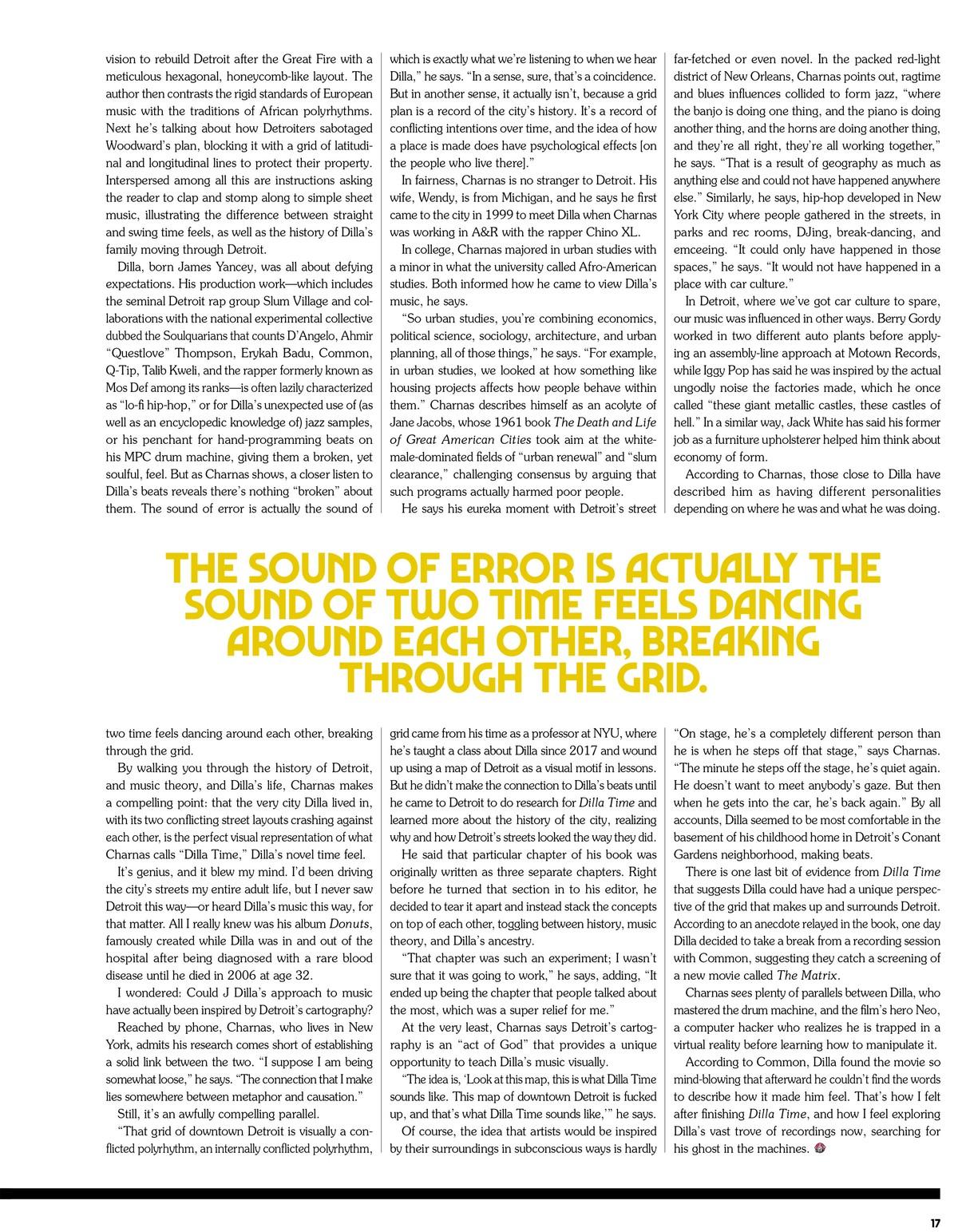WAKE UP, NEO
I thought I knew Detroit’s streets—then I learned about J Dilla.


I rolled my eyes when I started reading the second chapter of Dan Charnas’ recent book Dilla Time: The Life and Afterlife of J Dilla, the Hip-Hop Producer Who Reinvented Rhythm. It seems like every time outsiders write anything about the Motor City, they have to cram in an obligatory boilerplate history lesson: the fur trade, the arrival of the French in 1701, the Great Fire of 1805, Henry Ford, the Great Migration, deindustrialization, the 1967 summer of civil unrest, white flight to the suburbs, etc. Yawn.
But then something unexpected happened. Charnas segues into Augustus Woodward’s grand vision to rebuild Detroit after the Great Fire with a meticulous hexagonal, honeycomb-like layout. The author then contrasts the rigid standards of European music with the traditions of African polyrhythms. Next he’s talking about how Detroiters sabotaged Woodward’s plan, blocking it with a grid of latitudinal and longitudinal lines to protect their property. Interspersed among all this are instructions asking the reader to clap and stomp along to simple sheet music, illustrating the difference between straight and swing time feels, as well as the history of Dilla’s family moving through Detroit.

